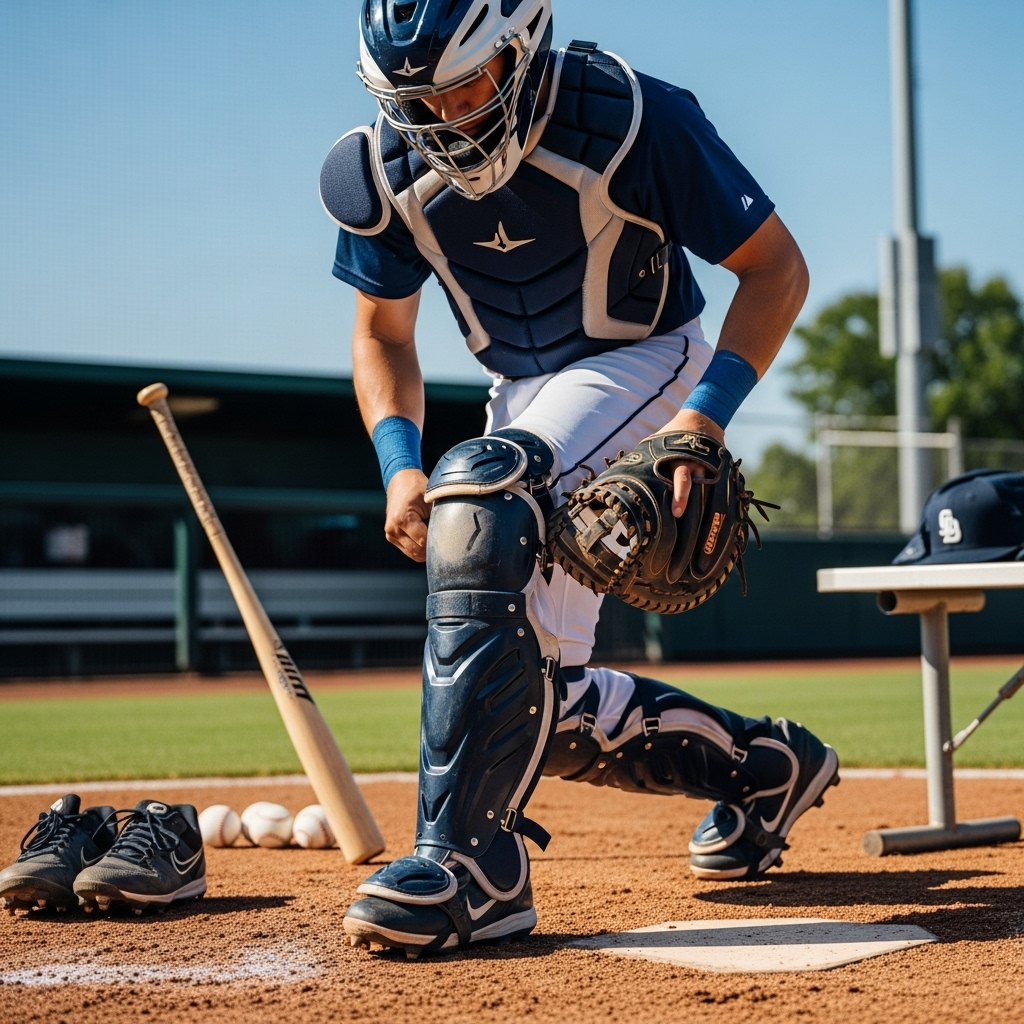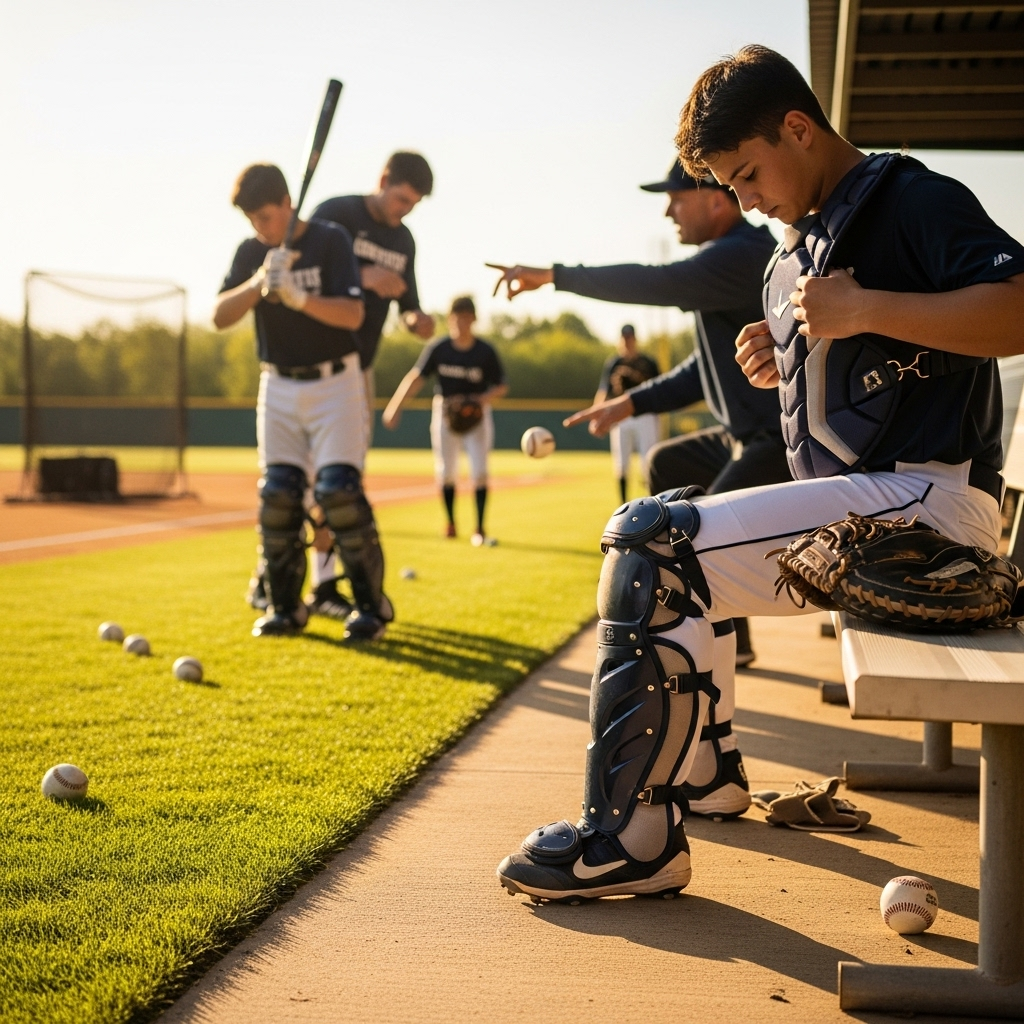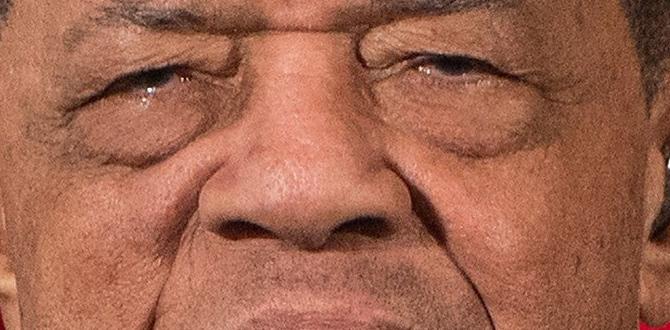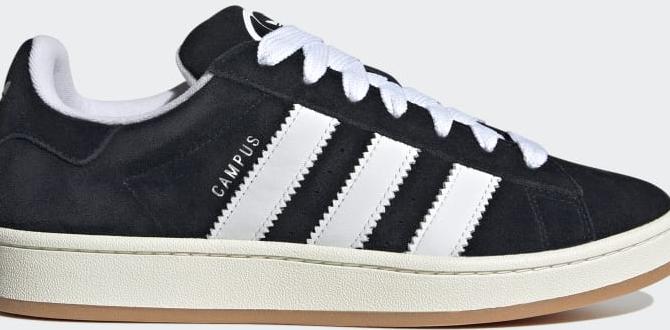Louisville Slugger catchers leg guards are crucial equipment for protecting young and experienced players from impacts, ensuring comfort and mobility to focus on the game. This guide helps you understand their importance and how to choose the right set.
Your Guide to Louisville Slugger Catcher’s Leg Guards: Essential Protection
As a catcher, you’re the quarterback of the baseball diamond. You see everything, direct the plays, and, most importantly, take a beating. One of the most crucial pieces of gear to keep you in the game and injury-free are your leg guards. They’re your first line of defense against foul tips, errant pitches, and those hard slides into home plate. But with so many options out there, picking the right set can feel a bit overwhelming, especially if you’re new to the position or outfitting a young player. Don’t worry, FriskMode is here to break it down. We’ll help you understand why leg guards are non-negotiable and how to find a Louisville Slugger set that offers the perfect blend of protection, comfort, and mobility.
Think of your leg guards as your personal shield. They’re designed to absorb the shock of impacts, preventing bruises, breaks, and more serious injuries. Without them, every dropped third strike or passed ball becomes a painful reminder of why this gear is so vital. We’ll go over what makes a good set, how to fit them properly, and what makes Louisville Slugger a go-to brand for so many players.
Why Catcher’s Leg Guards Are a Must-Have
Let’s be honest, catching is a tough position. You’re crouched for hours, blocking pitches, and often in the path of a runner trying to score. Foul tips, pitches in the dirt, and collisions at home plate are all part of the game. That’s precisely why catcher’s leg guards are not just recommended; they’re essential. They provide critical protection for your shins, knees, and ankles, areas that are highly exposed and vulnerable.
The primary function of leg guards is impact absorption. They are built with sturdy materials and often feature padding designed to dissipate the force of a baseball impact. This helps prevent injuries like hematomas (deep bruises), fractures, and sprains. Beyond direct protection, well-designed leg guards can also enhance your performance by providing stability and allowing for quick movements, crucial for blocking pitches and making throws.
For younger players, the stakes are even higher. Their developing bodies are more susceptible to injury, and instilling good protective habits early on is key. Parents and coaches understand that investing in quality gear like Louisville Slugger leg guards for youth players is an investment in their safety and their continued love for the game.
Understanding Louisville Slugger’s Commitment to Protection
Louisville Slugger has been a name synonymous with baseball excellence for generations. They understand the demands of the game and the needs of its players, especially catchers. When it comes to leg guards, they focus on a few key areas:
- Durable Materials: Louisville Slugger uses high-impact plastics and robust padding to create guards that can withstand repeated blows from baseballs.
- Ergonomic Design: The guards are shaped to fit the natural contours of a catcher’s legs, ensuring maximum coverage without hindering movement.
- Comfort and Ventilation: They recognize that catchers wear this gear for extended periods. Designs often include breathable materials and strategic ventilation to keep players cooler.
- Adjustability: For a secure and effective fit, Louisville Slugger leg guards typically feature adjustable straps, allowing players to customize the fit to their liking.
This commitment means that when you choose Louisville Slugger, you’re opting for gear that has been thoughtfully designed with player safety and performance at its core.
Choosing the Right Louisville Slugger Catcher’s Leg Guards

Selecting the perfect leg guards involves considering a few factors to ensure they meet your specific needs. It’s not just about picking the flashiest pair; it’s about finding the right balance of protection, fit, and comfort. Here’s what to look for:
1. Size and Fit: The Foundation of Protection
This is arguably the most critical aspect. Leg guards that are too big will shift around, leaving gaps where a ball can hit unprotected areas. Guards that are too small won’t offer adequate coverage. Louisville Slugger generally offers leg guards in various sizes, often categorized by age or height (youth, intermediate/teen, adult).
How to Measure:
- Knee to Ankle: The most common measurement is from the center of the kneecap down to the top of your shoe or cleat. Some brands might measure from the knee to the midpoint of the foot. Always check the specific sizing chart for the model you’re interested in.
- Thigh and Calf Circumference: While less common for raw sizing, ensure the guards wrap comfortably around your thighs and calves without being too constricting.
Fit Check on Arrival:
- Coverage: Once strapped on, the knee cap should be centered within the knee protector. The shin piece should extend all the way down to cover the top of your shoe.
- Straps: The adjustable straps should allow for a snug fit without cutting off circulation. You should be able to move comfortably without the guards feeling loose.
- Mobility: Bend your knees, squat, and walk around. The guards should move with you and not restrict your ability to get into a defensive stance or chase down a bunt.
2. Protection Level and Padding
Leg guards vary in their level of padding and rigidity. For younger players or those playing at lower levels, a good balance is often sufficient. For more experienced players or those catching higher-velocity pitches, you might want to look for models with:
- Thicker Foam Padding: This helps absorb more impact.
- Reinforced Shin Plates: Look for guards with multiple, overlapping plates or a single, robust piece of plastic for maximum protection against direct impacts.
- Ankle/Foot Protection: Some advanced models include integrated or detachable boot-style toe and ankle protection, which is excellent for blocking pitches in the dirt.
Louisville Slugger often provides different tiers within their leg guard lines, so reviewing the product specifications will tell you the intended level of protection.
3. Features to Consider
Beyond the basics, several features can enhance your experience:
- Ventilation: Look for designs with vents or breathable materials, especially if you play in warm climates. This helps reduce sweat and keeps you more comfortable.
- Weight: While protection is key, excessively heavy guards can fatigue you faster. Most modern guards strike a good balance.
- Removable Liners: Some higher-end models have removable and washable liners, which is great for hygiene and comfort.
- Color and Style: While not directly related to performance, aesthetics matter to many players! Louisville Slugger offers various color options.
4. Youth vs. Adult Catcher’s Gear
The primary difference between youth and adult leg guards lies in sizing and, sometimes, the level of protection. Youth gear is smaller and designed for younger, less developed legs. Adult gear is larger and often incorporates more advanced materials and padding to handle the greater forces involved in higher-level play. It’s crucial to choose gear designed for the player’s age and size to ensure proper fit and protection.
For instance, youth leg guards might focus on lighter, more flexible materials to allow for easy movement while still providing essential safety. Adult versions might feature more rigid plastics and denser padding for maximum impact resistance.
Key Features of Louisville Slugger Catcher’s Leg Guards
When you’re looking at Louisville Slugger’s lineup, you’ll often find these common features that contribute to their reputation for reliable gear:
- Ergonomic Knee & Shin Caps: Designed to provide excellent coverage and impact dispersion.
- Adjustable Straps: Typically multiple elastic or Velcro straps ensure a secure, customizable fit.
- High-Impact Plastic Shells: The outer layer is built to withstand direct blows from baseballs.
- Internal Padding: Soft foam or EVA (ethylene-vinyl acetate) padding absorbs shock and adds comfort.
- Breathable Liners: Many models incorporate fabric that wicks moisture and allows for airflow.
- Ankle Protection Components: Some designs offer additional padding or coverage around the ankle area.
These elements work together to create leg guards that are both protective and functional, allowing catchers to make the plays they need to without worrying about getting hurt.
Popular Louisville Slugger Catcher’s Leg Guard Models (Examples)

While specific model names and features can change year-to-year, Louisville Slugger consistently offers excellent options. Here are a couple of examples of the types of sets you might find:
Example 1: Louisville Slugger UPTX Series Leg Guards
These are often designed with the intermediate to advanced player in mind, offering a high level of protection and mobility. They typically feature;
- Advanced impact-resistant shell design.
- Moisture-wicking fabric for comfort.
- A streamlined silhouette for better agility.
- Strategic padding for optimal shock absorption.
- Multiple adjustable straps for a secure fit.
Example 2: Louisville Slugger Youth Series Leg Guards
Catered specifically to younger players, these sets prioritize comfort, ease of use, and essential protection.
- Lighter-weight construction to avoid fatigue.
- Easier-to-manage strap system.
- Sufficient padding for youth ball speeds.
- Designed for a proper fit on smaller legs.
Remember to always check the current year’s models and specifications on the Louisville Slugger website or at your local sporting goods store to find the exact features available.
How to Properly Wear Your Catcher’s Leg Guards
Wearing your leg guards correctly is just as important as choosing the right ones. A poor fit can negate their protective qualities, and incorrect usage can lead to discomfort or injury.
Step-by-Step Guide:
- Put on Your Leggings/Pants: Start by putting on your baseball pants or sliding shorts. This provides a base layer and helps the guards stay in place.
- Position the Guards: Place the leg guards on your legs. The knee cup should be centered directly over your kneecap. The shin piece should extend down to cover the top of your athletic shoes or cleats. Ensure the wider part of the shin guard is on the outside of your leg.
- Strap Them Up (Bottom to Top): Begin by fastening the lowest straps, usually around the ankle or lower shin. Make sure they are snug but not so tight that they restrict blood flow or movement.
- Secure the Mid and Upper Straps: Move up to the calf and then the thigh straps. Again, aim for a secure fit that prevents the guards from sliding down, but allows for full range of motion. You should be able to bend your knees comfortably and squat without the guards digging in or feeling loose.
- Check for Gaps: Once all straps are secured, do a quick check. Are there any obvious gaps where a ball could slip through? Adjust straps as needed to ensure maximum coverage.
- Movement Test: Perform some basic baseball movements: squat down quickly, stand up, take a few steps, and bend your knees. The guards should stay in position and not feel cumbersome.
It might take a few tries to get the strapping just right. Don’t be afraid to adjust them during warm-ups until they feel perfect for you.
Caring for Your Louisville Slugger Leg Guards

To ensure your Louisville Slugger leg guards last and continue to provide optimal protection, proper care is essential. Following these simple steps will help maintain their integrity and hygiene:
- Regular Cleaning: After each use, wipe down the exterior plastic with a damp cloth to remove dirt and grass stains. For dirtier guards, use mild soap and water.
- Drying: Always air dry your leg guards completely. Do not put them in a dryer, as high heat can damage the plastic and foam padding. Leave them in a well-ventilated area, away from direct sunlight, which can also degrade materials over time.
- Washing Liners (If Removable): If your leg guards feature removable liners, consult the manufacturer’s instructions for washing. Many can be hand-washed with mild detergent and air-dried.
- Inspect for Damage: Periodically check the guards for any cracks in the plastic, worn-out straps, or deteriorating padding. Addressing minor damage early can prevent more significant issues. You can often find replacement straps for most major brands.
- Proper Storage: Store your leg guards in a cool, dry place. Avoid cramming them into a tight equipment bag where they could be bent or dented. Some players use equipment bags with dedicated compartments for catcher’s gear to help maintain shape and prevent damage.
Just like any equipment, taking a little time for maintenance will extend its lifespan and ensure it always performs when you need it most.
The Importance of Proper Fit for Safety: A Deeper Dive
We’ve touched on fit, but it’s worth emphasizing just how critical it is for catcher’s leg guards. An ill-fitting set can lead to several problems:
- Increased Injury Risk: If guards are too loose, they can shift during play, exposing vulnerable areas like the knee joint or shin. A direct impact on an unprotected spot can be far more severe than on a well-padded area.
- Reduced Mobility: Guards that are too tight around the knee or thigh can restrict your squatting ability and agility, impacting your performance. This can lead to fatigue and frustration.
- Discomfort and Chafing: Friction from poorly fitting guards can cause chafing and irritation, which is incredibly distracting and uncomfortable during a game or practice.
- False Sense of Security: Wearing guards that don’t fit properly can give you a false sense of security, making you less cautious than you should be.
According to the Center for Science, Technology, Engineering, and Public Policy at the University of Texas, proper protective equipment fit is a key factor in injury prevention across all sports. This principle extends directly to catcher’s gear. Ensuring your Louisville Slugger leg guards conform snugly to your legs, with no major gaps, is a fundamental step in protecting yourself.
Think of it this way: the pad is only effective if it’s positioned correctly to take the brunt of the impact. If it slides down your shin, it won’t protect your knee as it should. If it’s too loose, the impact might just push the guard out of the way, still transferring force to your leg.
Fitting Guide Recap:
| Size Consideration | Action to Take | Why It Matters |
|---|---|---|
| Knee to Ankle Measurement | Measure from the center of your kneecap down to the desired top of your shoe. Compare to the product’s sizing chart. | Ensures adequate shin coverage, the primary area needing protection. |
| Straps | Fasten straps from bottom to top, ensuring a snug but comfortable fit. | Prevents guards from slipping and ensures they stay in the optimal protective position. |
| Mobility Test | Squat, bend knees, and move around. | Confirms that the guards do not restrict essential baseball movements. |
| Gap Check | Visually inspect for any openings between the guard and your leg or between guard sections. | Minimizes the risk of direct impact on unprotected areas. |
When to Consider Upgrading
Even the best gear wears out. You should consider an upgrade if:
- The plastic shell shows significant cracks or deep gouges.
- The internal padding has compressed and no longer feels protective.
- Straps are frayed, stretched out, or no longer hold securely.
- You’ve outgrown your current set or your needs have changed (e.g., moving to a more competitive league).
Frequently Asked Questions About Louisville Slugger Catcher’s Leg Guards

Q1: How do I know what size Louisville Slugger leg guards to buy for my child?
A: The best way is to measure your child’s leg from the center of the kneecap down to the top of their shoe. Then, cross-reference this measurement with the specific sizing chart provided by Louisville Slugger for the model you are considering. If your child is between sizes, it’s often better to go with the larger size, ensuring the straps can provide a snug fit.



